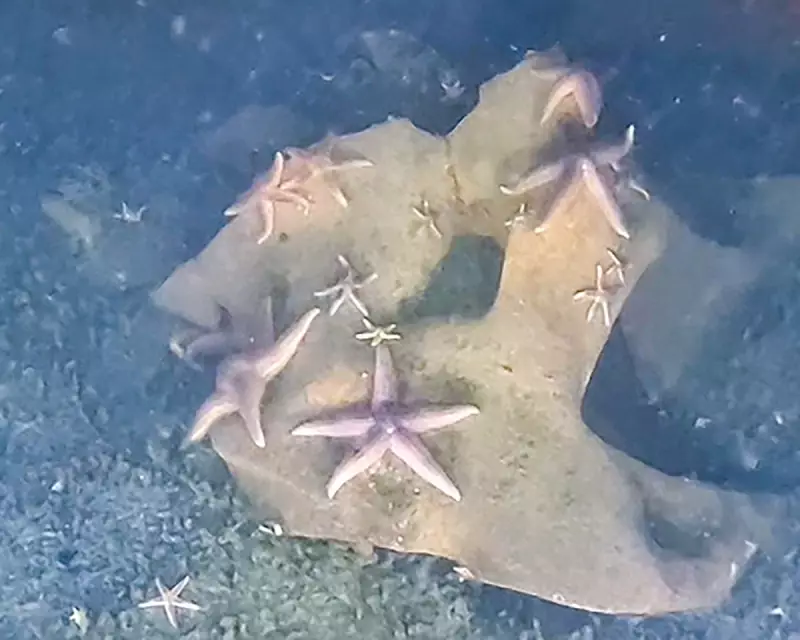
In a remarkable twist of nature's resilience, scientists have discovered that abandoned Nazi weapons at the bottom of the Baltic Sea have become thriving habitats for marine life. The unexpected finding reveals how life has reclaimed the dangerous remnants of warfare.
Unexpected Discovery Beneath the Waves
When researchers first descended into the brackish waters of Germany's Bay of Lübeck, they anticipated finding a toxic wasteland. Instead, they encountered a bustling underwater metropolis teeming with thousands of sea creatures. Andrey Vedenin from the Senckenberg Research Institute in Frankfurt am Main led the groundbreaking study that documented this extraordinary phenomenon.
The team discovered more than 40 starfish piled on a single chunk of TNT, living mere centimetres from its explosive filling. Fish, crabs, sea anemones and mussels had all made their homes on the rusting metal shells, fuse pockets and transport cases that once contained deadly weapons.
A Surprising Ecological Haven
The research, published in the journal Communications Earth & Environment in September, revealed staggering numbers. Scientists counted more than 40,000 animals living on every square metre of the munitions, compared to only 8,000 individuals in the surrounding seafloor areas.
Vedenin described the scene as comparable to a coral reef in terms of biological diversity. "It is actually astonishing how much life we find in places that are supposed to be toxic and dangerous," he remarked. The phenomenon demonstrates nature's remarkable ability to adapt and regenerate even in the most unlikely environments.
Historical Context and Future Implications
Between 1946 and 1948, approximately 1.6 million tonnes of arms were dumped off the German coastline. These weapons, including bombs, torpedo heads and mines, were largely forgotten as tourism developed in the area above. Now, they've become accidental protected zones where species like the declining Baltic cod are thriving.
As Germany begins removing these dangerous relics from the seabed, scientists advocate for replacing them with safer structures to preserve the newly established ecosystems. Vedenin suggests concrete structures could provide similar habitats without the explosion risk or ongoing chemical contamination.
The discovery in the Bay of Lübeck sets an important precedent for how we approach underwater munitions removal worldwide, demonstrating that even humanity's most destructive creations can become scaffolding for new life.





